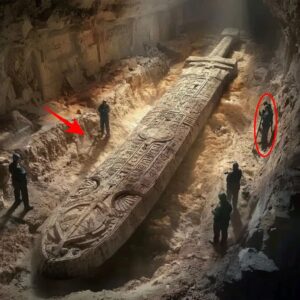The story of Peter Kurten, known as the “Vampire of Dusseldorf,” is one of the most chilling chapters in the annals of criminal history. Kurten, a deranged German serial killer, ended his reign of terror with his decapitation in 1931. Today, by a twist of fate, his severed head lies in the eerie depths of Ripley’s Believe It or Not! in Wisconsin Dells. This article explores Peter Kurten’s dark legacy, the journey of his head from execution to display, and the disturbing appeal it holds for visitors.
The Vampire of Dusseldorf


Peter Kurten earned his macabre nickname through a series of brutal murders that shocked Germany in the early 20th century. His crimes were particularly gruesome and included the murder of men, women, and children. What set Kurten apart from other serial killers was his penchant for drinking the blood of his victims, earning him the nickname “The Vampire of Dusseldorf.” His sadistic acts and the absolute terror he inflicted on his victims made him one of the most notorious killers in history.
Capture and execution
Kurten’s reign of terror came to an end in 1930, when he was finally caught by the authorities. The trial that followed was a grim spectacle, with detailed accounts of his horrific crimes. In 1931, Peter Kurten was sentenced to death and subsequently beheaded for his monstrous acts. His execution marked the end of a dark chapter, but it was only the beginning of another strange journey for his severed head.
From Germany to Wisconsin: Kurten’s Head Journey


After his execution, Peter Kurten’s head was preserved and eventually made its way into the Ripley’s Believe It or Not! collection. How did this macabre artifact travel from Germany to Wisconsin Dells, a popular family vacation destination? The exact details of its journey remain a mystery. However, it is believed that Robert Ripley, the museum’s founder, acquired the head as part of his collection of oddities and curiosities that capture the grotesque and unusual.
The spooky exhibit at Ripley’s Believe It or Not!


Today, Peter Kurten’s head is displayed among other exhibits depicting history’s most sadistic killers. Ripley’s Believe It or Not! in Wisconsin Dells, known for its eclectic and grisly collections, offers visitors a look at the dark side of human nature. Kurten’s head, preserved in a glass case, serves as a grim reminder of his heinous crimes and the morbid fascination that such artifacts evoke.
The haunting charm


Why does Kurten’s head attract so much attention? Fascination with serial killers and their artifacts is a well-documented phenomenon. For some, it’s a morbid curiosity, a way to confront the darker aspects of humanity from a safe distance. For others, it’s an interest in the psychological and historical aspects of crime. The display of Peter Kurten’s head in a family vacation destination like Wisconsin Dells adds an extra layer of irony and intrigue, highlighting the complex interplay between horror and fascination.
The story of Peter Kurten, the “Vampire of Dusseldorf,” continues to captivate and horrify people long after his death. From his brutal crimes to his execution and the subsequent display of his head in Ripley’s Believe It or Not!, Kurten’s legacy is a testament to the enduring fascination with the macabre. Whether seen as a historical artifact or a symbol of humanity’s darkest impulses, Peter Kurten’s head remains a chilling reminder of the fine line between fascination and horror. [embedded content]




